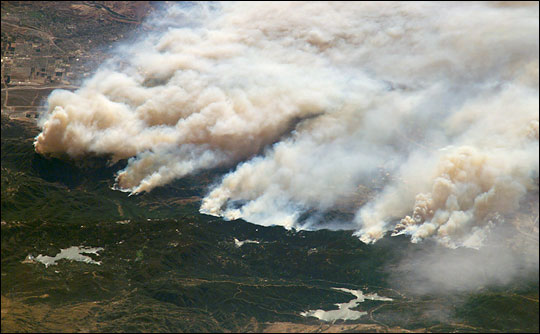Wildfire prevention’s misguided focus
 In 2001, the National Fire Plan was enacted by Congress, providing funding and support for local and regional governments to prepare for and mitigate wildfires. Now, a study led by Tania Schoennagel of the University of Colorado has attempted to assess the major results of the NFP in the Western United States around urban areas.
In 2001, the National Fire Plan was enacted by Congress, providing funding and support for local and regional governments to prepare for and mitigate wildfires. Now, a study led by Tania Schoennagel of the University of Colorado has attempted to assess the major results of the NFP in the Western United States around urban areas.
![]() Surprisingly, her results show that although the NFP was meant to invest heavily in urban areas, the overwhelming majority of treated areas are not along the wildland-urban interface (WUI) despite the fact that efforts in the WUI should have the greatest potential to reduce fire risk in human communities. Her results, which spanned the years 2004-2008 and included 44,000 management areas, show that three percent of the area treated was within the WUI, with another eight percent in an additional 2.5-km buffer around the WUI. In addition, the results showed that only 17 percent of this buffered WUI is under federal ownership. The reach of the NFP extended only to public, not private lands, so even if all public areas were assessed and managed under the NFP, its impact could be small.
Surprisingly, her results show that although the NFP was meant to invest heavily in urban areas, the overwhelming majority of treated areas are not along the wildland-urban interface (WUI) despite the fact that efforts in the WUI should have the greatest potential to reduce fire risk in human communities. Her results, which spanned the years 2004-2008 and included 44,000 management areas, show that three percent of the area treated was within the WUI, with another eight percent in an additional 2.5-km buffer around the WUI. In addition, the results showed that only 17 percent of this buffered WUI is under federal ownership. The reach of the NFP extended only to public, not private lands, so even if all public areas were assessed and managed under the NFP, its impact could be small.
The authors suggest that for the NFP to be more effective, greater priority must be given to locating management areas in and near the WUI. The hurdle, they admit, is figuring out how to shift management emphasis from public to private lands.
Read more in the AP story.
Schoennagel, T., Nelson, C., Theobald, D., Carnwath, G., & Chapman, T. (2009). Implementation of National Fire Plan treatments near the wildland-urban interface in the western United States Proceedings of the National Academy of Sciences DOI: 10.1073/pnas.0900991106